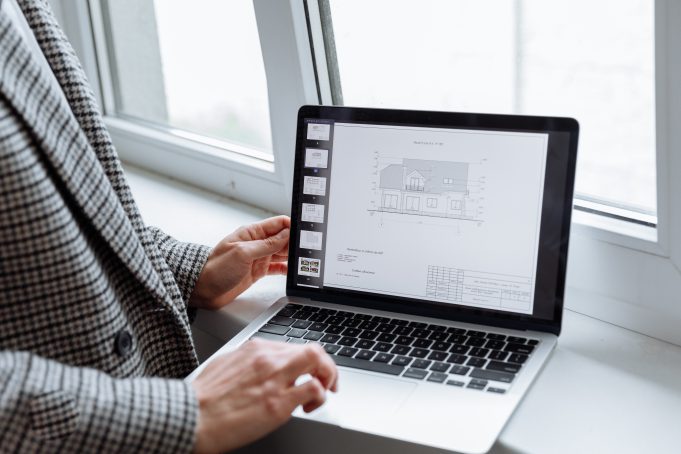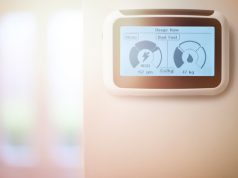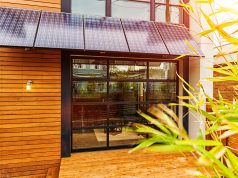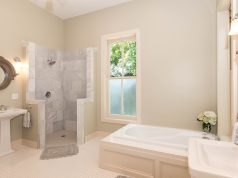If we look at the past century or so, we can see that home designs have changed a lot. This has included everything from the designs themselves to how different spaces are used and the material we use to build our homes. Seeing these trends, we can conclude that the homes of the future will look very different from the homes we have today. In this article, we will look at some ideas for what the home of the future will look like. Some are probable and some are less likely to be realized.
An Emphasis on Energy Efficiency
Energy efficiency is already something many people consider when buying, building, or renovating a home. With more people now paying attention to the effects of our actions on the environment, we can expect to see this trend to continue, and homes of the future become more energy efficient than the most efficient homes are today.
An emerging home design that is worth a mention is the Passive House. It uses low conductivity materials for its insulation, is completely airtight, has two or three layers of glazing, few thermal bridges, and heat recovery systems. All of these features combined mean the home is so energy efficient that its energy bills are a fraction of those of a standard traditional home.
Unorthodox Use of Space
Right now, we are heading towards saturating the horizontal space that we have in cities and neighbourhoods where the population density is above the average. It is getting harder to find outdoor space as we construct more houses to accommodate more people. This means that the homes of the future will have nowhere to go horizontally, so they will have to climb vertically. What will this look like?
First, homes will be narrow so designers can fit more homes that have a smaller footprint into the areas they have. Second, these buildings will have more stories. This is so that designers can fit more homes in the same piece of land or space. With outdoor space being so limited, the only option for outdoor space will be balconies and rooftops.
We can expect to start seeing designers take inspiration from boats and yachts for the designs of these rooftop spaces.
More Bedrooms and Bathrooms
Right now, the average home has two bedrooms and one or two toilets. This is fine for a home that has three to five people living in it. Looking at the current demographic trends, we see that people are living longer due to advancements in medicine and technology as well as improvements in nutrition and quality of life.
Couple this with the increasing cost of housing all over the world and we are likely to see more people sharing one house in the future. These houses will have more bedrooms and more bathrooms than the average home does right now to accommodate the needs of everyone living in the home.
The question that arises then is, will people buy or build these bigger houses in the future? That remains to be seen but if you want to know which one is the better option for you right now, 24 Housing has an amazing guide on that. 24 Housing provides you with all the information you need on buying, planning, designing, and building your home so you are informed regardless of whether you wish to buy, build or rent.
A Focus on Accessibility
As the population ages, designers will have to start thinking about what experts call “third age” homes. These are buildings that are built with those over the age of 65 in mind. Accessibility will be a huge consideration, with communal services, lifts, ramps, and level access receiving more attention than other features. All these features will need to be added with assured ownership and privacy in mind.
Smart Gadgets and Applications
Although not strictly a part of the house’s design, gadgets and appliances are still an integral part of a home. The Internet of Things has radically transformed how we use and interact with things like thermostats and electric metres. These devices are connected to the internet through which they send and receive information. These connections also allow them to be controlled from anywhere in the world.
These devices are also smart enough that they can do things like turn your lights on and off, regulate temperature and alert you if something is happening in the home without any intervention from you. Smart devices also talk to you to let you know things like when you are running out of groceries or need to pay for a streaming service subscription.
Because this technology is still relatively new, we have not explored much of what it can do. We can expect that future homes will have more advanced versions of what we consider to be smart appliances and gadgets. Maybe your washing machine could tell another machine it is done so it can collect, fold and store away your clean clothes? The possibilities here are only limited by our imaginations.
Solar Will Be a Part of the Design
We have already seen Tesla and other companies try to replace the roofs we have today with solar panels or some version of a solar roof. With renewable energy receiving the push it is today and companies working on improving solar and battery technologies, the home of the future is likely to rely more on solar power than power from the grid.
With these improvements, people will be able to power their homes and charge their cars without relying on a grid that will become increasingly unreliable as it ages.
Better Home Security
Security is already a key consideration, with over 80% of people who bought a home in the United States in 2021 saying smart home security convinced them to buy the home. Monitoring our homes will become something we expect rather than the exception. With all our devices connected, technology will help keep us, our loved ones, and our homes safe.
There is a lot to be excited about when it comes to future home designs and features. We are already seeing glimpses of what the future holds through the advancements like the Internet of Things and new home construction and design technologies. We can be sure that these homes will look very different from the ones we have today.














